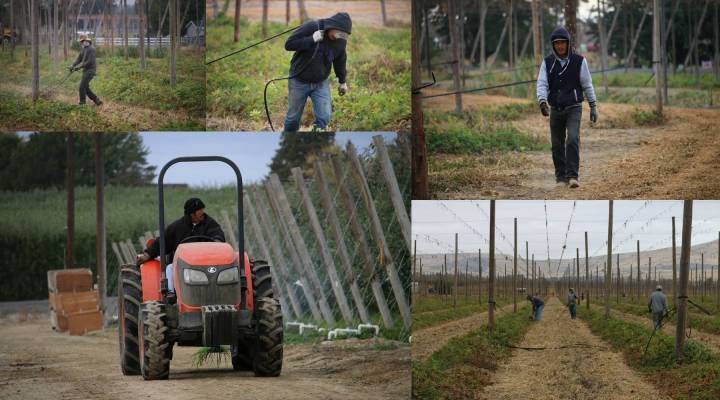
How America’s immigrants work, in 5 charts and maps
How America’s immigrants work, in 5 charts and maps

To see the latest story of “How The Deck is Stacked,” our series with Frontline and PBS NewsHour on the battle over immigration and how it’s changing the job landscape across the state of Washington, click here.
1. What industries are foreign-born workers employed in?

The industries that foreign-born workers are disproportionately employed in.
As the Pew Research Center finds, the distribution of immigrants in the workforce varies widely to U.S.-born employees. Though employment and industry is heavily regional, general trends emerge, such as the reliance of immigrants in the agriculture and construction industries.
2. Where do America’s immigrants work?
While it’s no surprise that border and agriculture-reliant states and border states like California (34 percent) and Texas (22 percent) rely heavily on immigrants in their workforce, at least 5 percent of workers are foreign-born internationally in all but 11 states.
3. America’s foreign-born population has more than doubled in the last 30 years.

According to the Migration Policy Institute, immigrant employees accounted for about 26 million workers in the workforce in 2016.
4. Foreign-born workers send a lot of money back home.
According to the World Bank and Pew Global, $133,552,000,000 in remittances was sent from United States to other countries in 2015. Mexico ($24.3 billion), China ($16.2 billion) and India ($10.9 billion) had the most money being sent back home.
5. Undocumented immigrants in the United States may have already peaked.

There were an estimated 11 million unauthorized immigrants in the U.S in 2014.
Due to a mix of immigration policy, border security, and changing economic fortunes on both sides of the border, illegal immigration into the United States has slowed its pace. In fact, between 2009 and 2014, more people from the United States moved to Mexico than from Mexico to the United States.
This story was produced as part of our election series, How the Deck is Stacked, in collaboration with Frontline and PBS NewsHour. You can find more stories related to this series here.
There’s a lot happening in the world. Through it all, Marketplace is here for you.
You rely on Marketplace to break down the world’s events and tell you how it affects you in a fact-based, approachable way. We rely on your financial support to keep making that possible.
Your donation today powers the independent journalism that you rely on. For just $5/month, you can help sustain Marketplace so we can keep reporting on the things that matter to you.


















